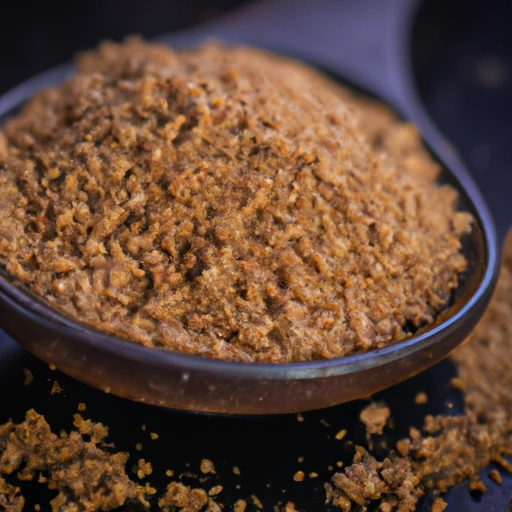TVP
Description

Textured Vegetable Protein, or TVP, is a highly nutritious soy product that is an excellent meat substitute for vegetarians and vegans. It's made by taking defatted soy flour, a by-product of soybean oil extraction, and cooking it under pressure, then drying and texturizing it, resulting in a chewy or fibrous texture that resembles meat when cooked.
Common uses
TVP is widely used as a meat substitute or extender in vegan and vegetarian cooking. It's a versatile ingredient that can be used in a variety of dishes such as tacos, chili, meatballs, and burgers. It is also a popular choice for commercial food production in items like canned soups, stews, and frozen entrees.
Nutritional value
Calories
One quarter-cup serving (approximately 24g) of dry TVP can contain around 80 calories (335 kJ).
Protein
That same serving size delivers about 12 grams of protein, which is roughly equivalent to two ounces (56.7g) of meat.
Fat
TVP is low in fat, with less than 0.5 grams per serving.
Carbohydrates
Carbohydrates are present in TVP in modest amounts, with roughly 7 grams per serving, predominantly in the form of fiber.
Vitamins
While processing can reduce some vitamins, TVP is often fortified with vitamins, including B-vitamins such as Thiamine and Folate.
Minerals
It is also a good source of minerals, especially iron and magnesium, which are critical for blood health and metabolic functions.
Health benefits
TVP is recognized for its high protein content which is essential for muscle repair and growth. It's also rich in fiber, aiding digestion and promoting a feeling of fullness, which may help in weight management. The low-fat nature of TVP makes it beneficial for heart health.
Potential risks
As TVP is a soy product, it may not be suitable for those with soy allergies. Some concerns have been raised about genetically modified organisms (GMOs) in soy products, and the high levels of processing involved in TVP's production may be a concern for those seeking whole food diets.
Common recipes
TVP can replace ground meat in almost any recipe, such as spaghetti Bolognese, shepherd's pie, and meatloaf. It's also great in vegetarian patties and meatless chili.
Cooking methods
Before using TVP in recipes, it typically needs to be rehydrated with water or broth—use 7/8 cup (210 mL) of liquid for every 1 cup (96g) of dry TVP. Once rehydrated, it can be sautéed, baked, or boiled.
Pairing with other ingredients
TVP pairs well with bold seasonings and sauces that help enhance its relatively neutral flavor. It absorbs flavors well, so marinating it in spices and herbs can yield delicious results.
Summary
Textured Vegetable Protein (TVP) is a versatile and nutritious meat substitute made from soy flour. It is an excellent source of protein and fiber, has a long shelf life, and is easy to prepare. Suitable for a variety of dishes, TVP can be used in global cuisines and accommodates both American and European units of measurements in recipes. While it has many health benefits, those with soy allergies or concerns about processed foods should approach TVP with caution.